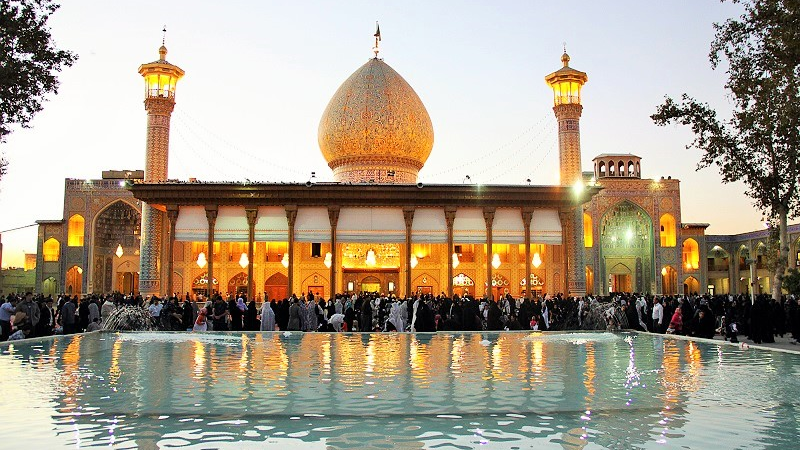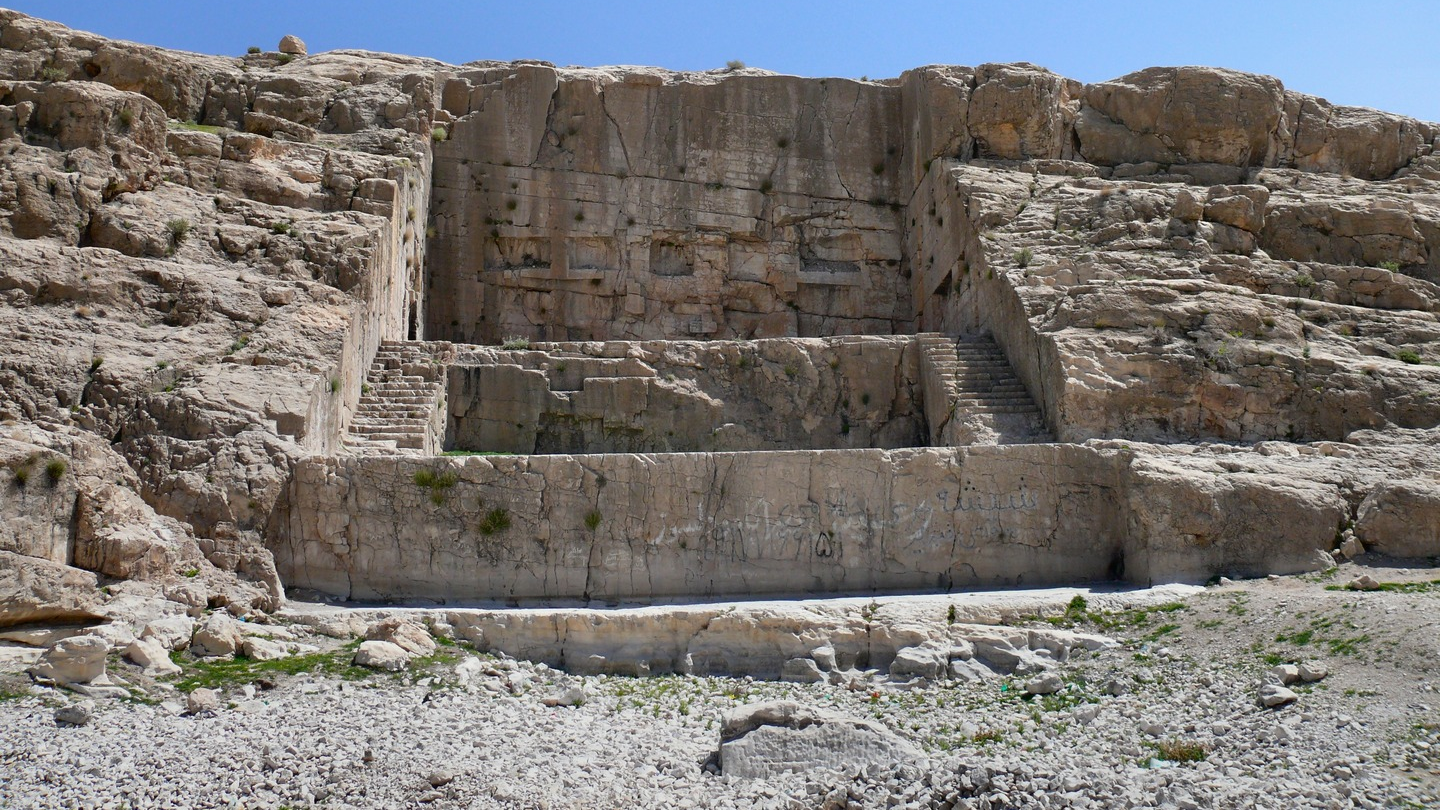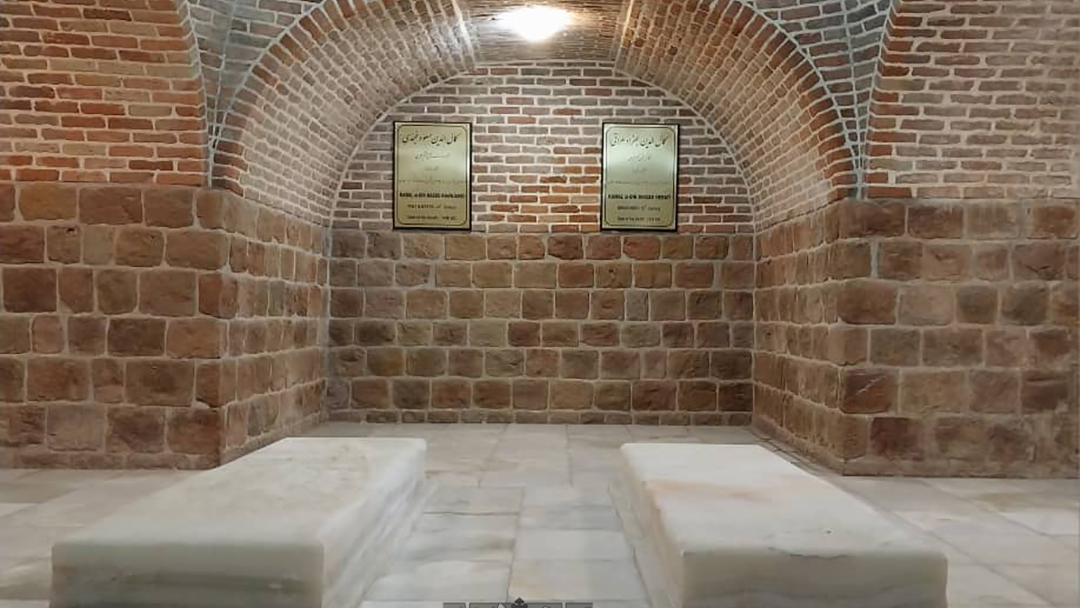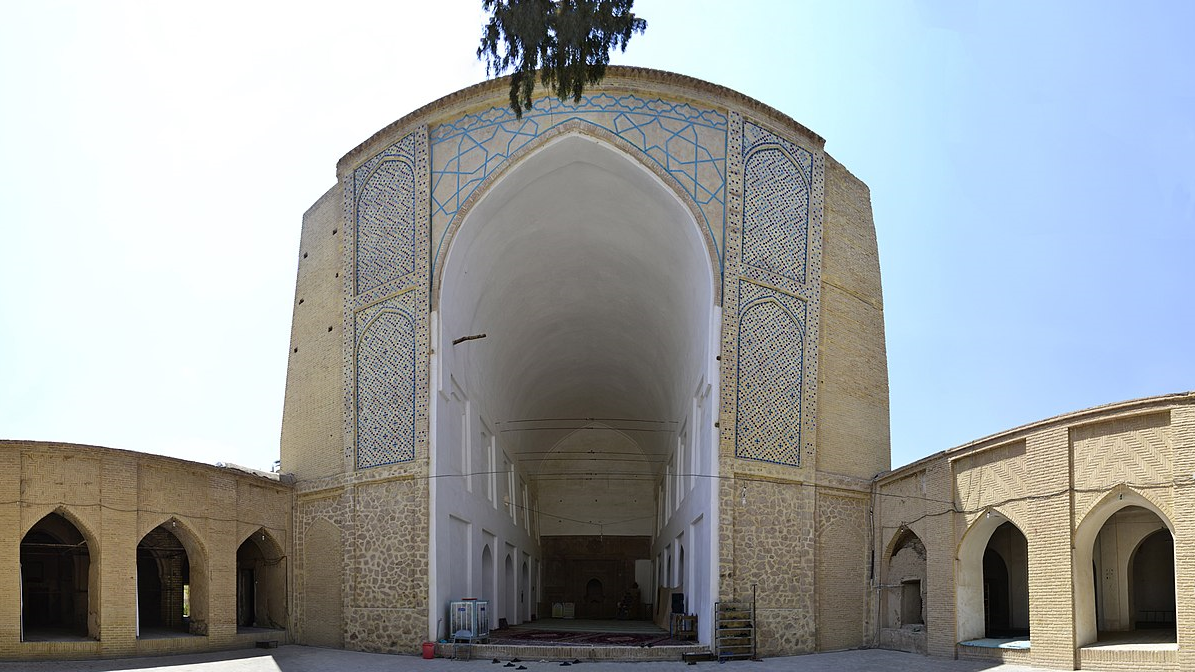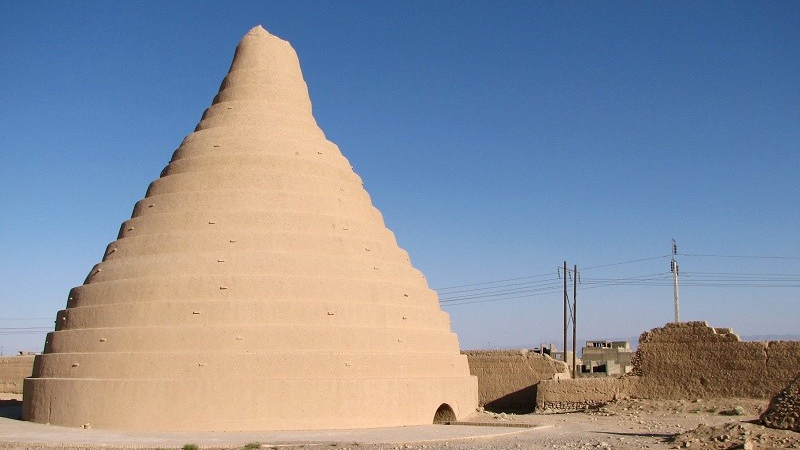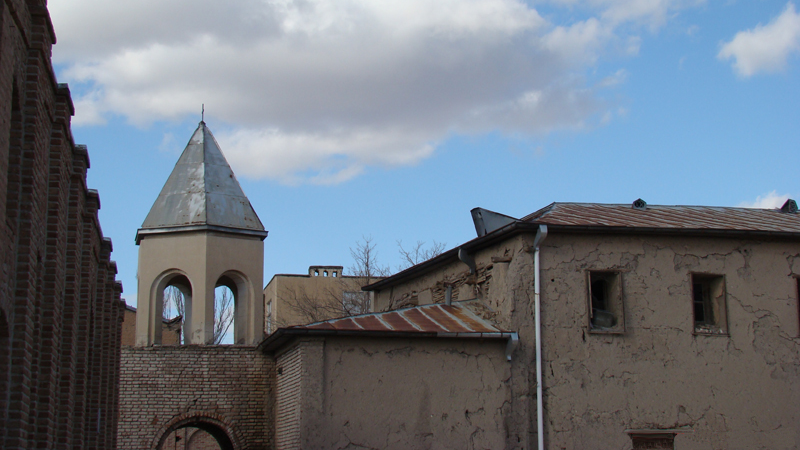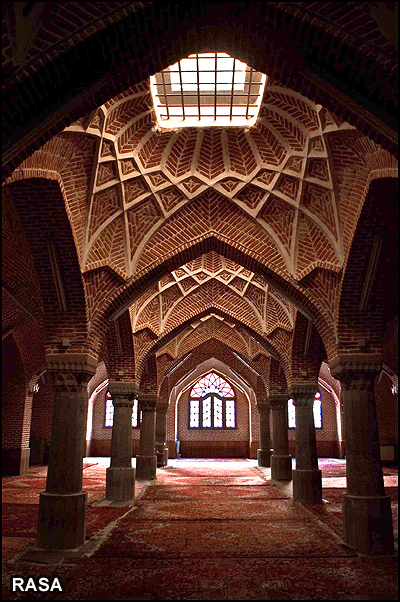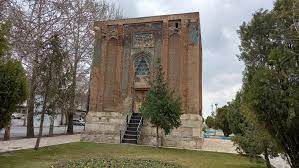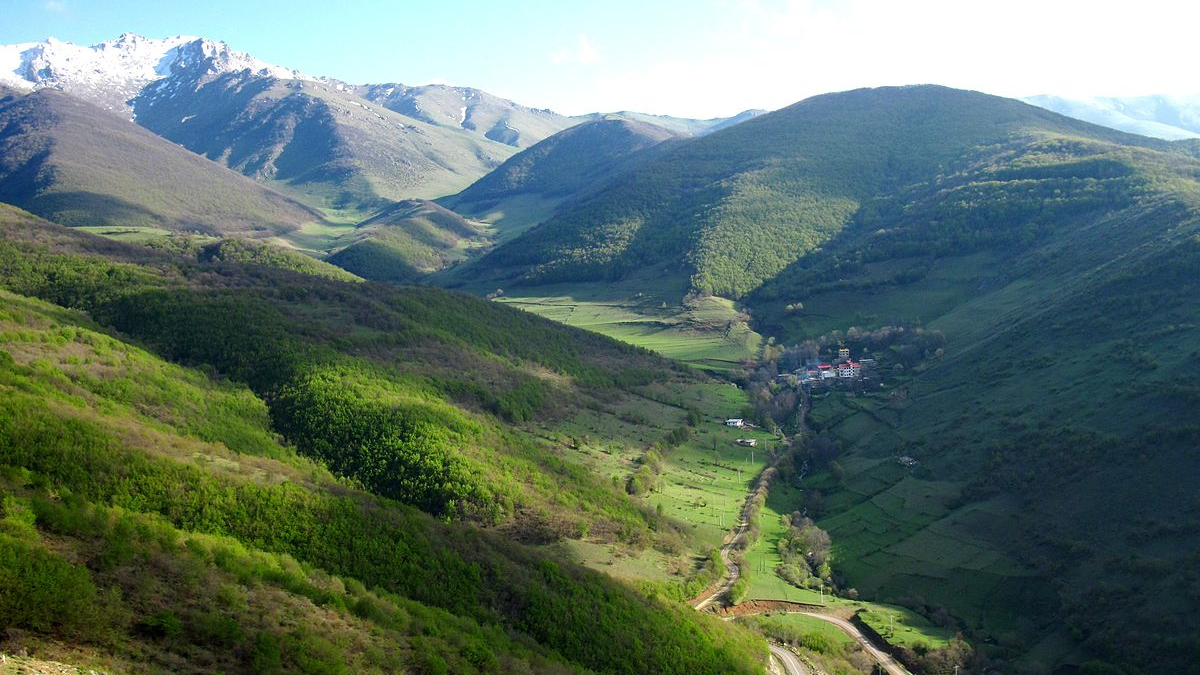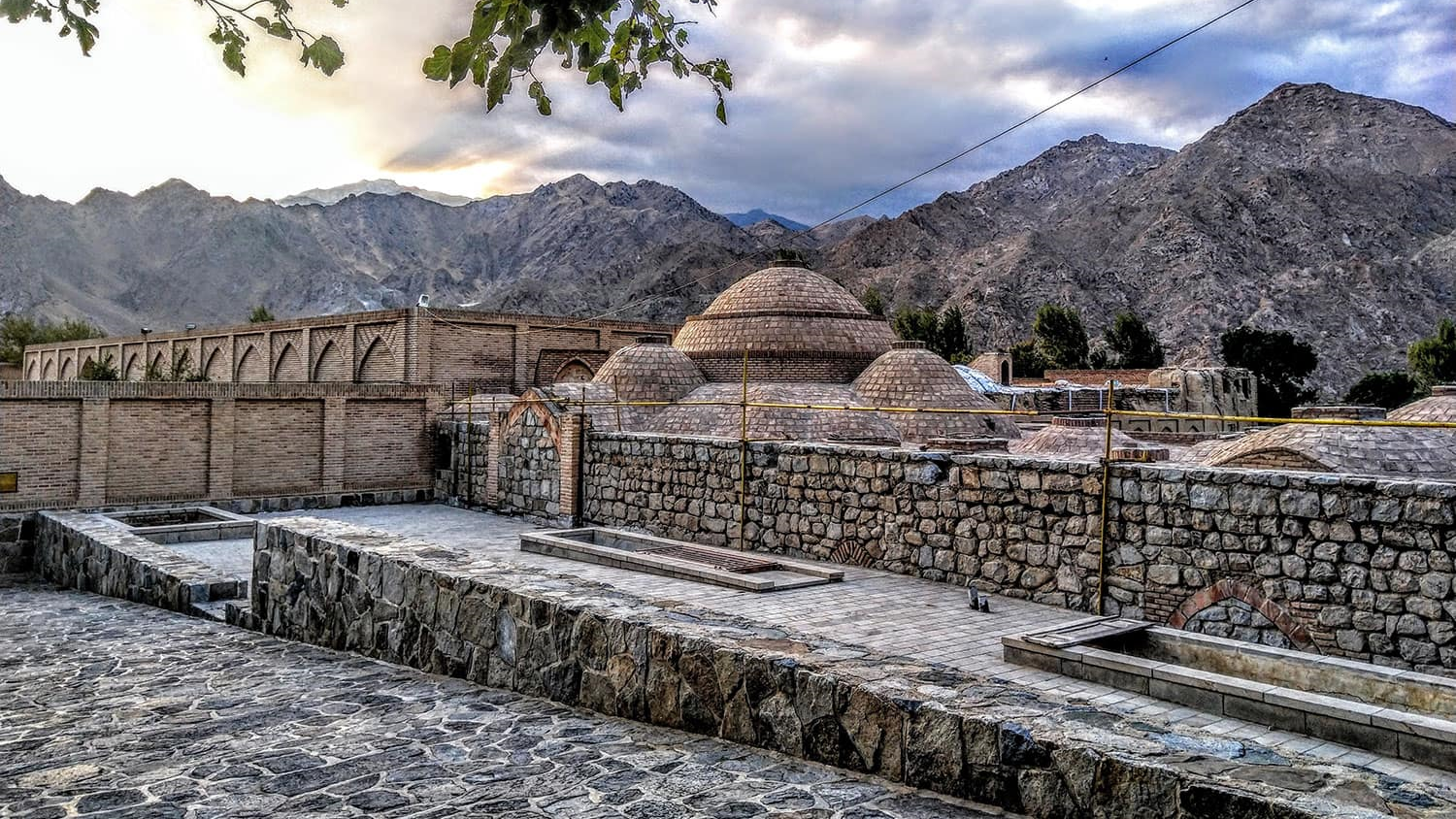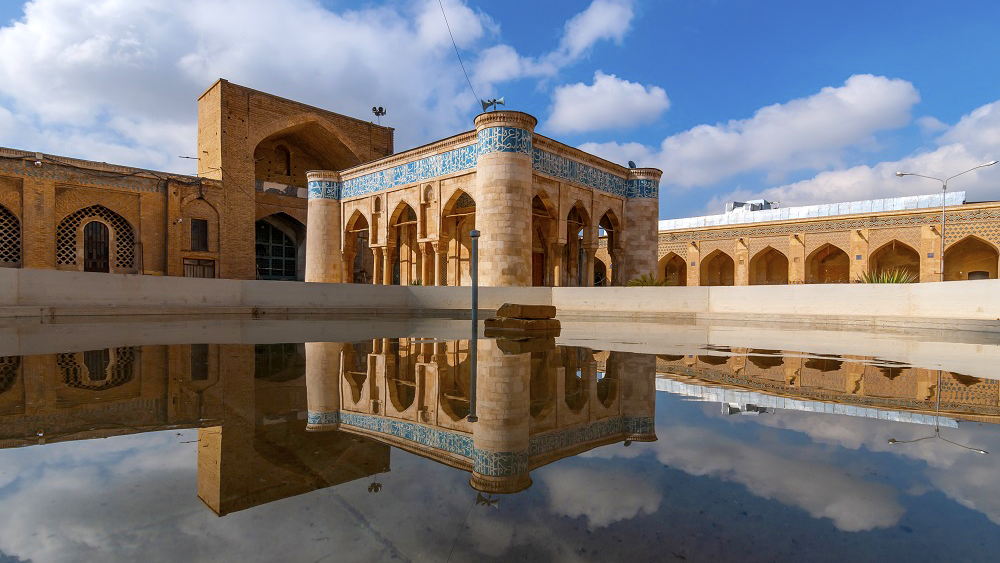
Tomb of Darius I; And Its 2500-Year-Old Inscription
In the heart of a mountain called "Husseinkooh", in a historical area called Naqsh-e Rostam, are located four stone tombs of Xerxes (reigned from 485 to 465 BC), Darius I (reigned from 522 to 486 BC), Ardeshir I (reigned from 465 to 424 BC), and Darius II (reigned 423 to 404 BC). These four tombs are almost identical to each other, but the tomb of Darius I is more important than the other three tombs because it houses many inscriptions written in cuneiform.
The Root Cause of Stone Tombs
It seems that during the Achaemenid rule, the tradition of burying the dead in stone tombs was learned from the Medes. The tombs from the period of the Medes (678 to 549 BC), which exist in the west of Iran, prove such a claim. However, the exterior and interior features and forms of Achaemenid tombs in Rostam-e Naqsh are completely quite different.
Tomb of Darius I
The height of this tomb from the ground level, which stands at 26 meters due to the accumulation of soil at the foot of the rocks was originally 38 meters and looked more awe arising. Like the other three tombs, the tomb of Darius was built in the form of a cross and in order to make it more difficult to climb the tomb, the lower part of this crucifix was made very slippery.
There is an image of a middle-aged man above the entrance of the tomb, who is standing in front of the fireplace and praying. This 2.7-meter-tall image is most likely that of Darius himself.
According to historical evidence, Darius I was buried in this tomb after he died in 486 BC. It seems that Darius started the construction of his tomb at the same time as the construction of the Apadana Palace in Susa and Persepolis in Shiraz, and this tomb was prepared several years before his death.
There are 9 graves inside the tomb of Darius, which shows that in addition to him, some of his relatives must have been buried there. It has been said that Darius’ parents were killed while visiting his grave. According to some experts, in the beginning, there was only one grave there, but with the death of his parents, two graves were added and with the death of his wife and children or the prediction of their death, six more graves were also added to the tomb.
Paint was used to create certain images on the tomb of Darius, and the remains of blue paint on the capitals of the tomb’s columns and some Elamite and Persian words have been identified by the archaeologists on the upper inscriptions. Remains of brown, red, and green colors have also been observed.
The creation of graves in the heart of the stone was later on imitated by different regimes.
Petroglyphs at the Bottom of Darius I's Tomb
There are two large petroglyphs right below the tomb of Darius I dating back to the Sassanid era. Both petroglyphs tell the story of the victory of kings riding on horses and defeating their enemies. In all probability, the lower one and most certainly the upper one belongs to the Sasanid king Bahram II (reign 274 to 293 AD).
The Inscription of Darius I’s Tomb
There are two stone inscriptions in ancient Persian, Elamite, and Akkadian languages in the outer part of the tomb, the texts of which are similar to a will and an ethical advice.
The inscriptions in the tomb of Darius the Great play an important role in explaining the political, religious, and social situation of that time. Darius the Great had a great role in making these inscriptions, which describe the historical and social conditions of his time. These inscriptions provide a lot of information about Persepolis, the Achaemenids, and the life of the people of those days.
The first inscription is engraved on the upper part of the tomb and the second one has been created next to the entrance door of the tomb. The content of both inscriptions has a poetic language and is the manifestation of the personality and genius of Darius I. In the first inscription, he has spoken in a common language, and in the second inscription, he has mentioned some of his own characteristics.
The third inscription is located below the Elamite text and is written in Aramaic script, but not much has remained of it. However, from whatever little part that is left, archaeologists have concluded that this inscription was written about 200 years after the construction of the tomb, between 312 and 305 BC.
The tomb of Darius the Great was inscribed on the list of Iran’s national heritage in the year 1931.
The tomb of Darius was built in the form of a cross and in order to make it more difficult to climb it, the lower part of this crucifix was made very slippery.
| Name | Tomb of Darius I; And Its 2500-Year-Old Inscription |
| Country | Iran |
| State | Fars |
| City | Marvdasht |
| Type | Historical |
| Registration | National |

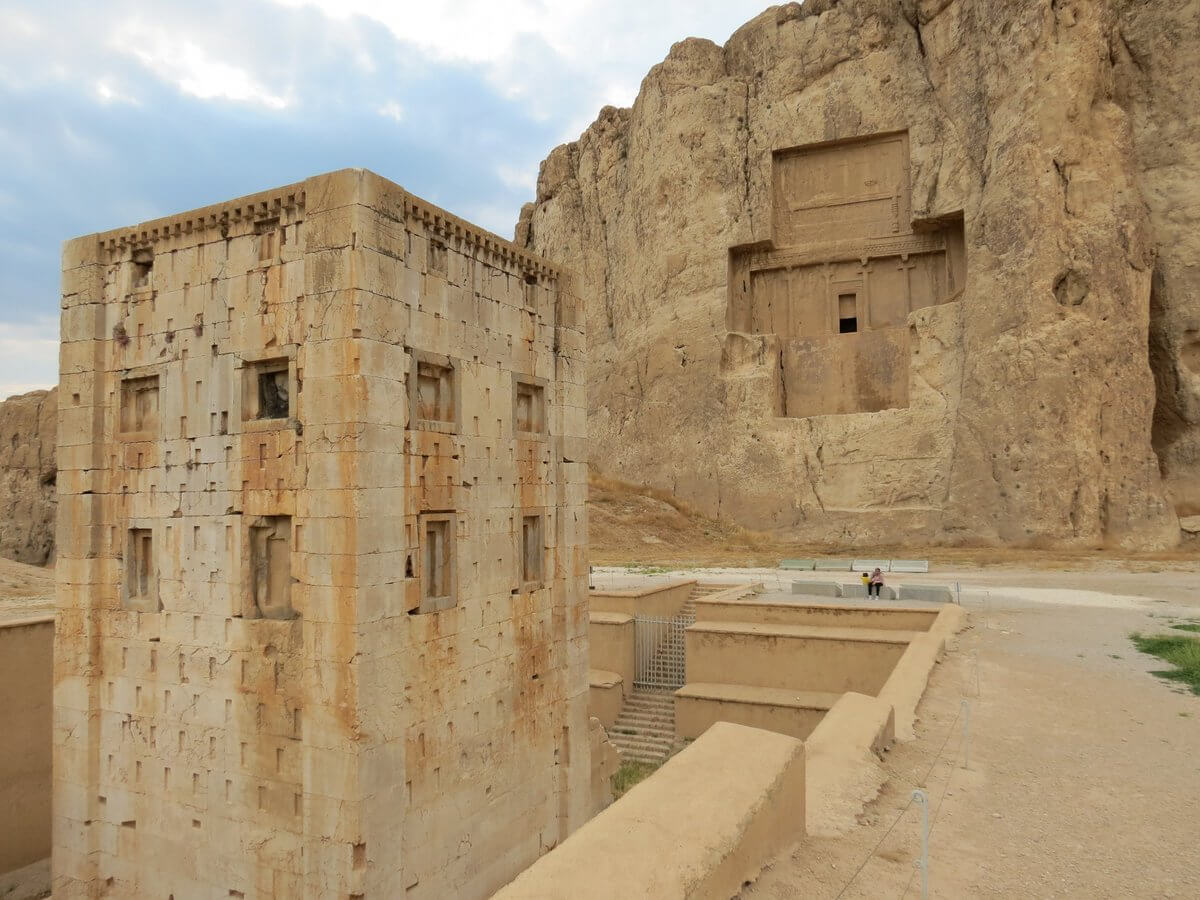
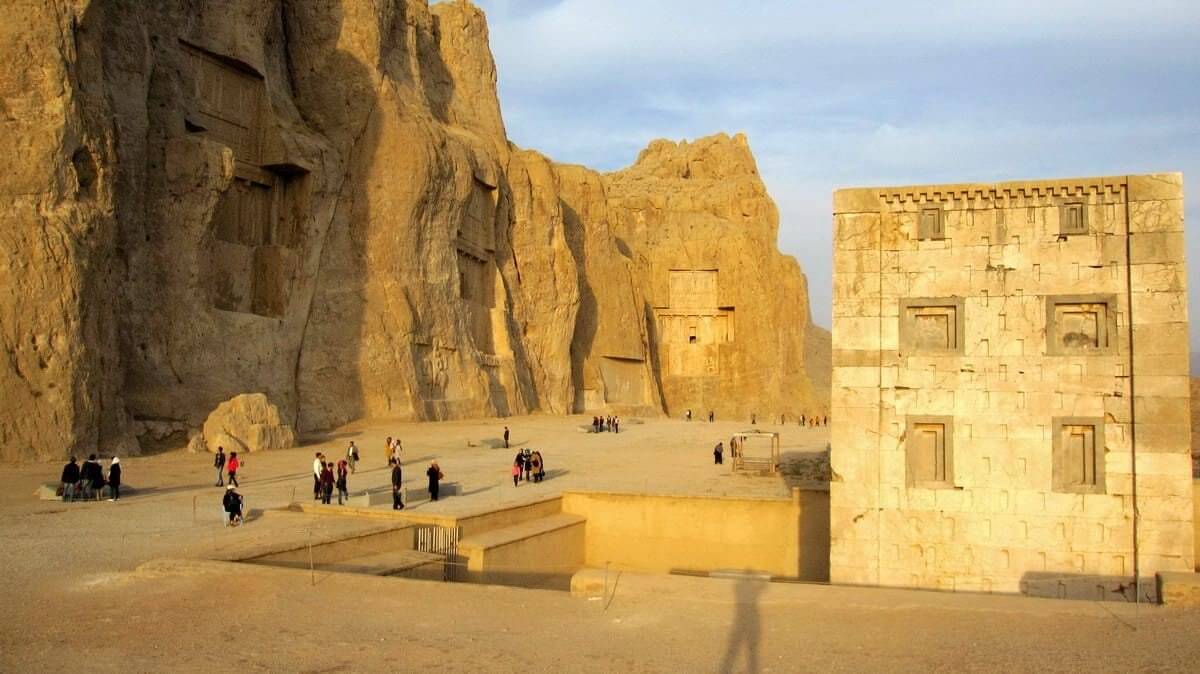



Choose blindless
Red blindless Green blindless Blue blindless Red hard to see Green hard to see Blue hard to see Monochrome Special MonochromeFont size change:
Change word spacing:
Change line height:
Change mouse type:
